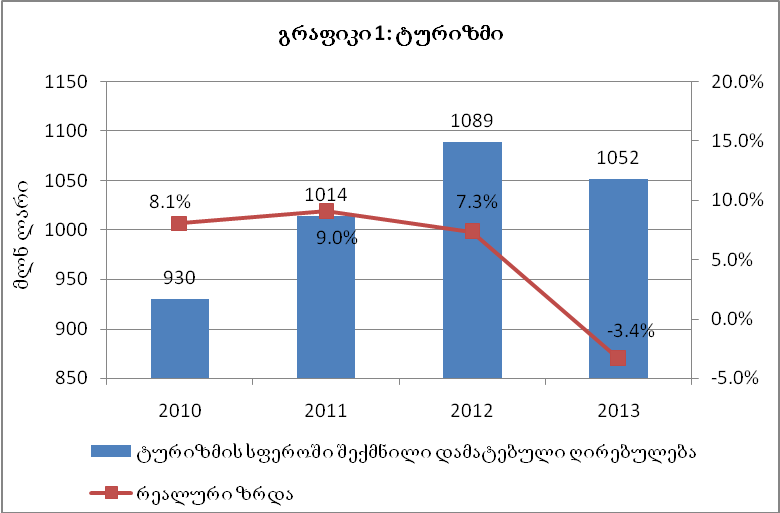On 7 October 2014, during the session of the Budget and Finance Committee of the Parliament of Georgia, Minister of Finance of Georgia, Nodar Khaduri, stated that the private sector is competing with the public sector in the field of wages. He also pointed out that the wages in the public sector are lower as compared to the private sector and the growth of wages is necessary in order to attract and maintain qualified personnel.
FactCheck took interest in the conditions of the labour market of Georgia and verified the accuracy of the aforementioned statement.
According to the National Statistics Office of Georgia, the number of economically active people in Georgia equalled two million in 2013, 85.4% of whom were employed (1,712 thousand people) whilst 14.6% were unemployed (292 thousand people).
The majority of the employed people (61%) were self-employed whilst the remaining 39% were hired employees (658 thousand people). Up to 81% of the hired employees were engaged in the business (private) sector[1] and the remaining 19% were employed in the public sector.
Diagram 1: Number of Employed People in 2013
Source: National Statistics Office of Georgia
As the diagram makes clear, the number of people employed in the public sector decreased after 2010 whilst the number of those employed in the private sector increased (see Chart 1). In addition, the differences between the average wages in the public and the private sectors decreased. For example, the average wage in the private sector was 40.2% higher than that of the public sector in 2007 whilst in 2014 this difference is down to 7.6% (see Chart 1).
Chart 1: Employment and Wages in Public and Private Sectors
Source: National Statistics Office of Georgia
In addition, the number of active enterprises significantly increased after 2010. For example, a total of 15,000 more enterprises (57,600) were operating in Georgia in 2011 as compared to the previous year. The increase in the number of enterprises, of course, increased the demand on the labour force and the competition between the public and the private sectors increased. The growth of the number of people employed in the private sector in terms of the decreasing pay-gap indicates a growing competition. Hence, the Minister’s statement that the competition between the public and private sectors for the labour force has grown is correct.
The table below depicts the public and the private sector wage differences by their economic profile.
Table 1:Public and Private Sector Wage Differences in 2013
Source: National Statistics Office of Georgia
As the table makes clear, the wages in the majority of the public sector jobs are lower as compared to the private sector; however, the average wages in the public sector in the mining industry and financial companies are much higher than those of the private sector.
It should be noted that high wages are typically paid by large businesses in the private sector. Hence, we can say that the public sector is in competition with large businesses. As for medium and small businesses, their wages are significantly lower than those of the public sector (see Table 2). Considering the fact that the public sector is in need of qualified personnel and they are mostly employed in large businesses, we can say that the state is in competition with large businesses whilst the competition with medium and small businesses is not overly serious.
Table 2: Amount of Average Wage by the Size of the Business
Source: National Statistics Office of Georgia
Table 2 also shows that there was a trend of the average wage increase in the public sector in recent years. The wages in this sector were 37% higher in 2013 than in 2010.
Conclusion
The role of the public sector in employment reduced after 2010 whilst the average wages increased. In spite of the reduction in the pay-gap between the private and the public sectors, the wages in most of the fields of the public sector are still significantly lower than those of the private sector.
The biggest competition in terms of wages is between the state and large businesses. The wages in the public sector are higher as compared to medium and small businesses.
FactCheck concludes that Nodar Khaduri’s statement: “Despite the fact that wages are being increased in the public sector, they still fall short of the private sector wages,” is TRUE.
|
Type of Economic Activity |
Public Sector |
Private Sector |
Difference |
| Average Wage |
738.7 |
795.1 |
-7,6% |
| Agriculture |
527.5 |
484.3 |
9% |
| Mining Industry |
2,431.2 |
842.1 |
189% |
| Processing Industry |
692.6 |
682.7 |
1% |
| Production and Distribution of Electricity, Gas and Water |
845.1 |
1,027.2 |
-18% |
| Construction |
749.2 |
872.9 |
-14% |
| Transport and Communications |
936.3 |
1,149.8 |
-19% |
| Finances |
3,037.5 |
1,486.6 |
104% |
| Real Estate Operations |
646.7 |
917.6 |
-30% |
| Education |
410.6 |
485.2 |
-15% |
| Healthcare |
607.3 |
684.3 |
-11% |
|
Public Sector |
Large Businesses |
Medium Businesses |
Small Businesses |
|
|
2010 |
539.1 |
755.2 |
395 |
312.9 |
|
2011 |
589.1 |
820.7 |
451 |
283.1 |
|
2012 |
656.1 |
928.1 |
528.1 |
338.1 |
|
2013 |
738.7 |
969.9 |
565.8 |
372.2 |
[1] According to the methodology of the National Statistics Office of Georgia, the statistics of the business sector do not include the data from the active commercial banks of the country (number of employed people, wages, etc.).










